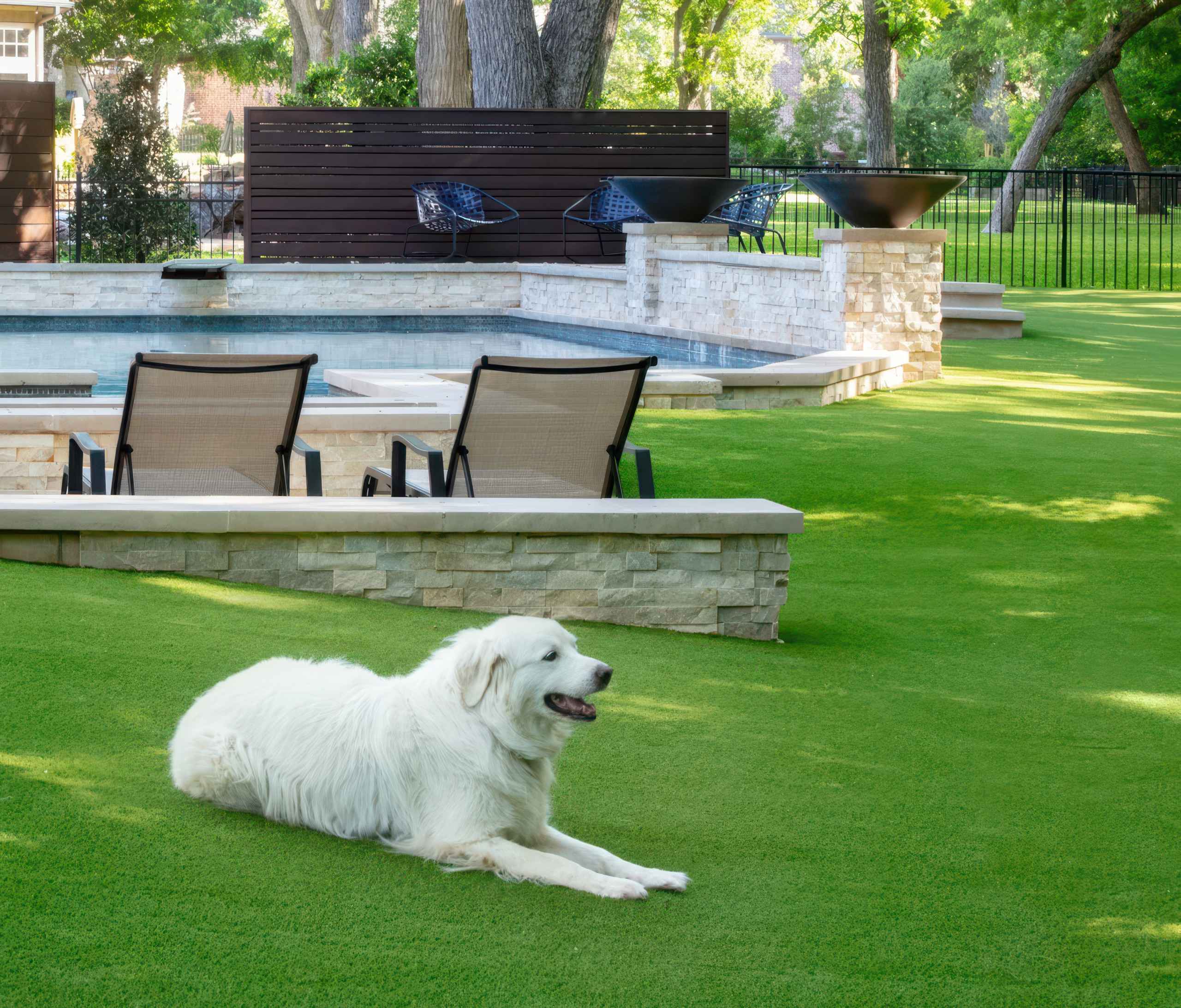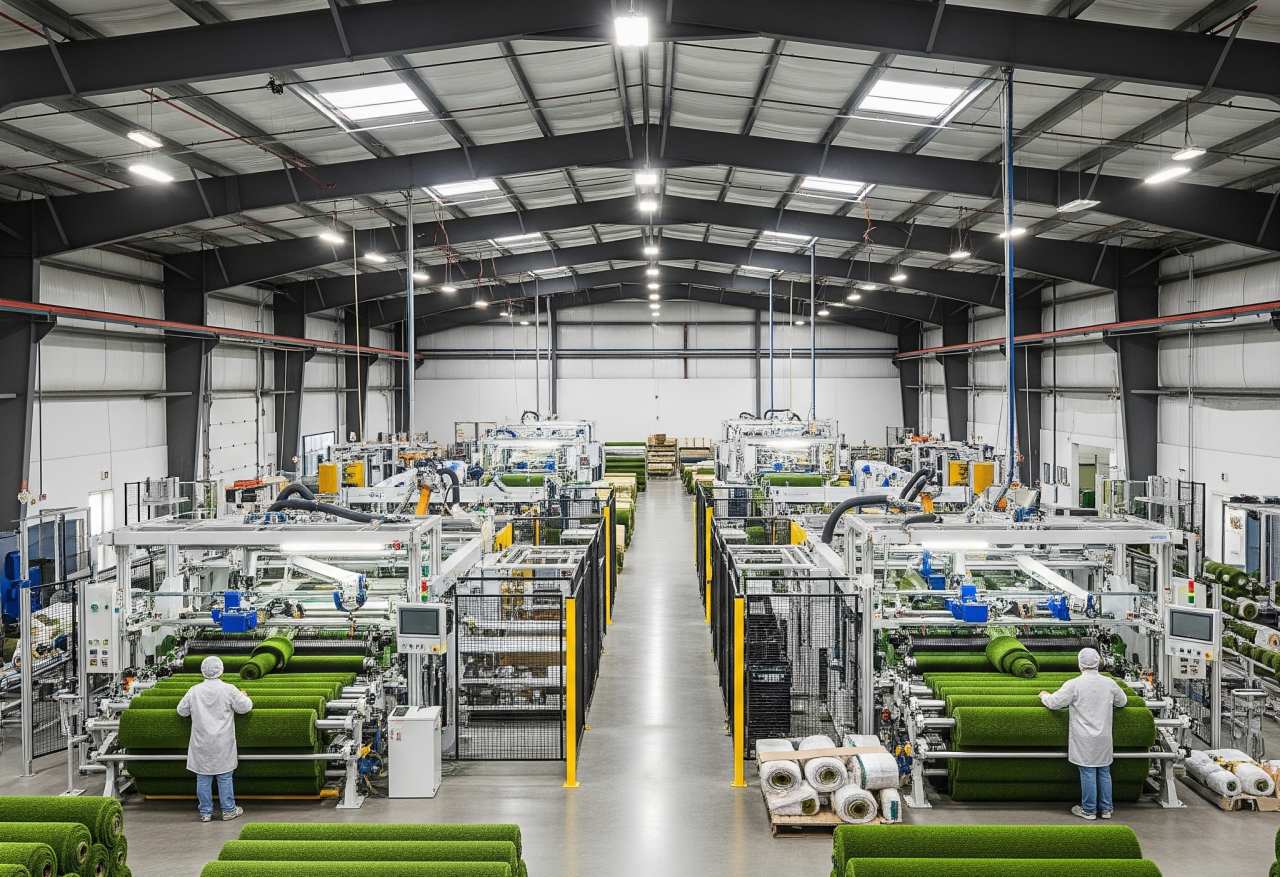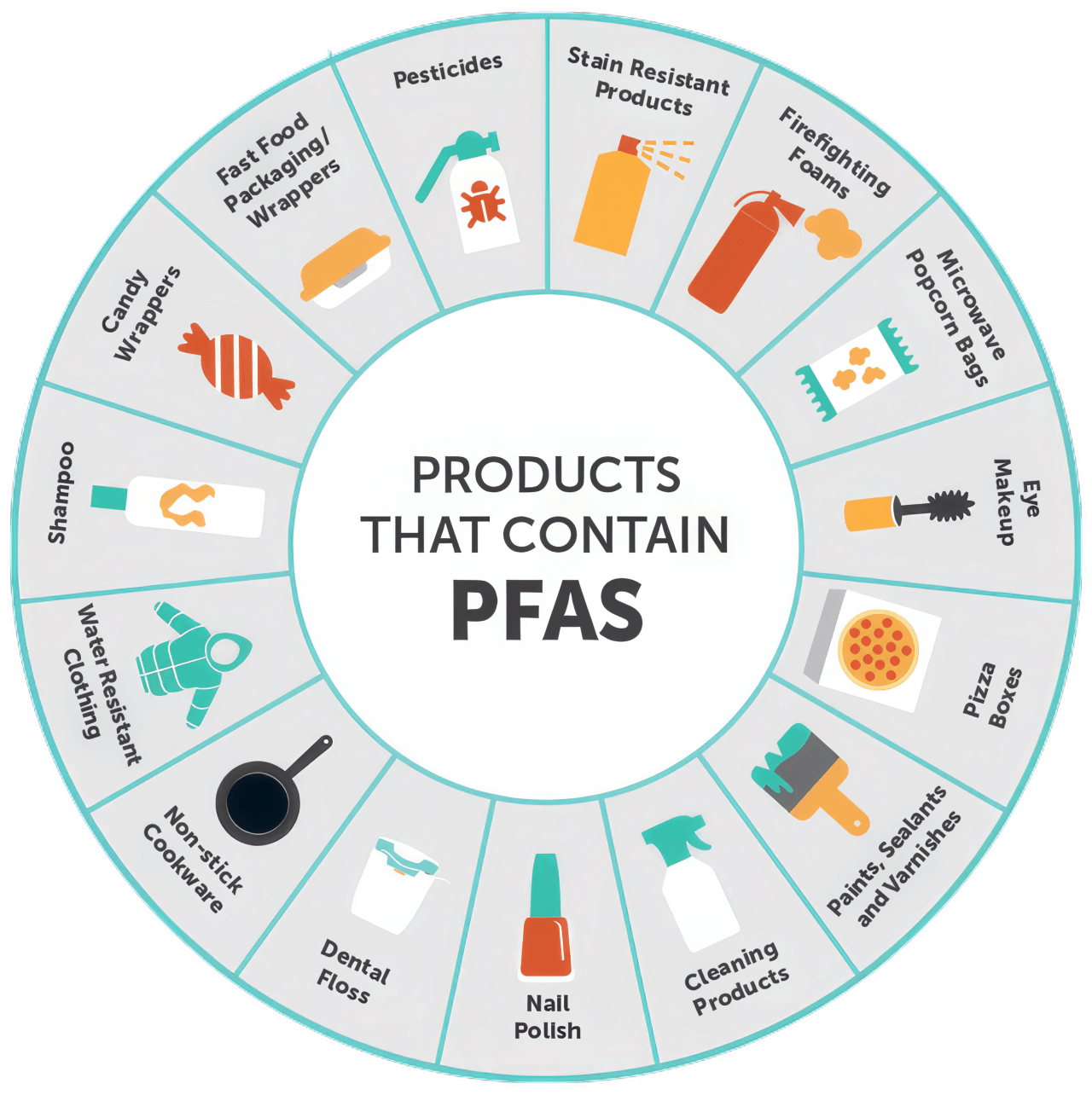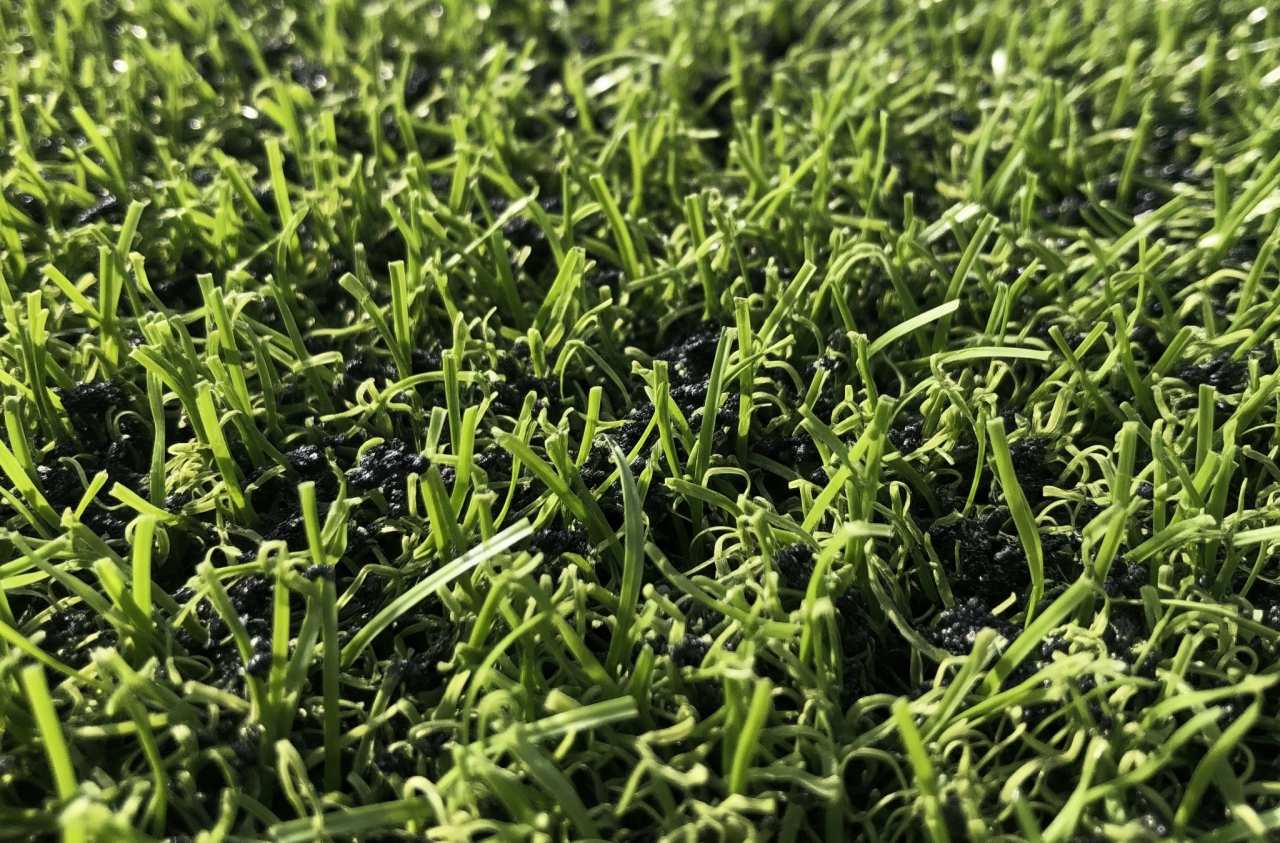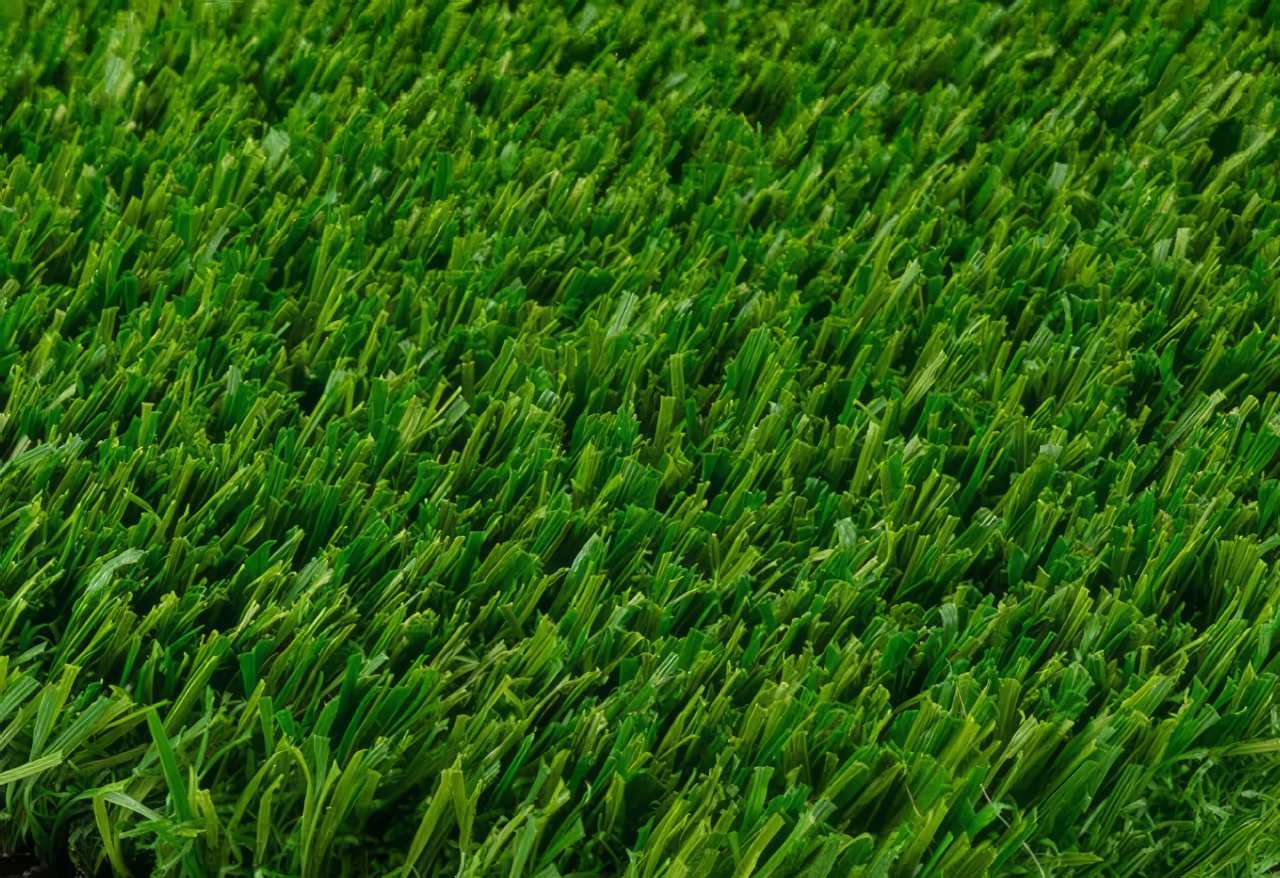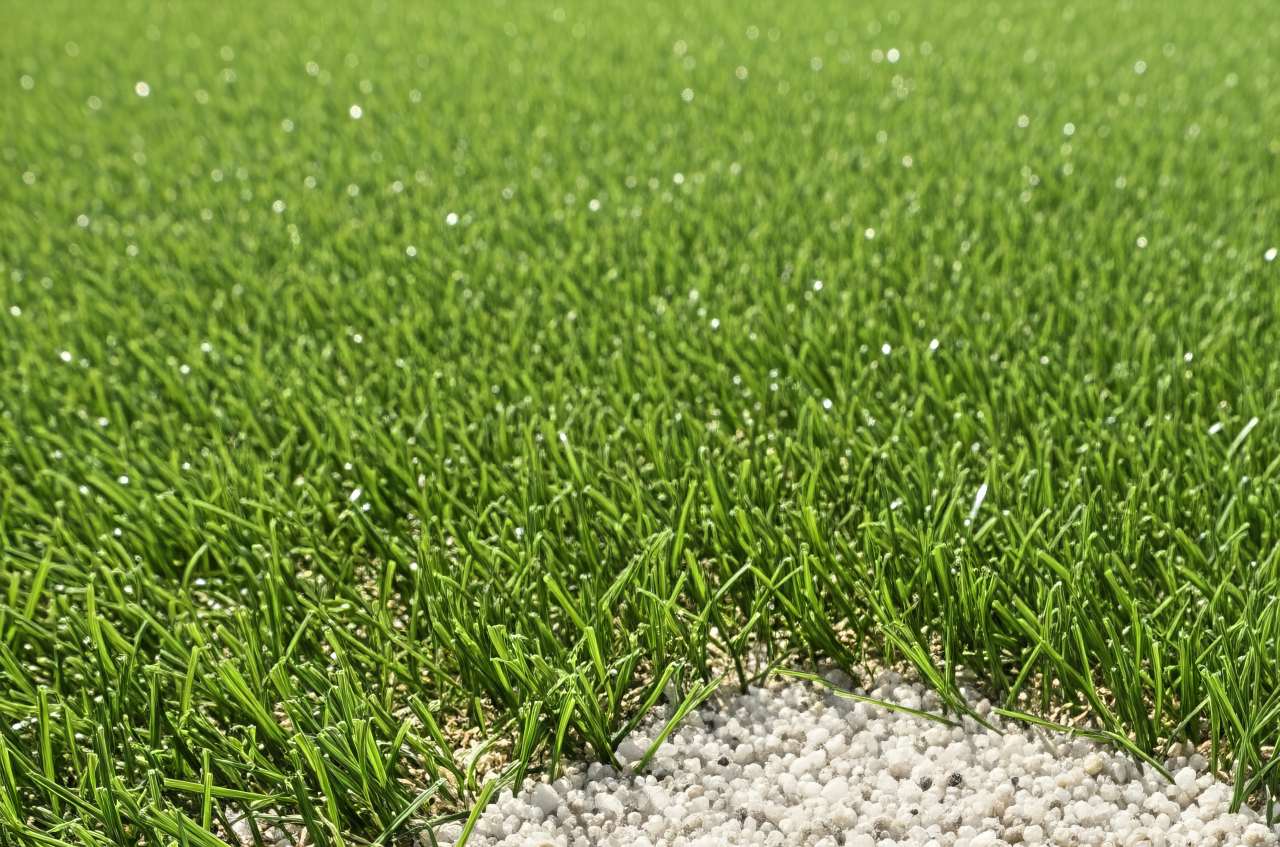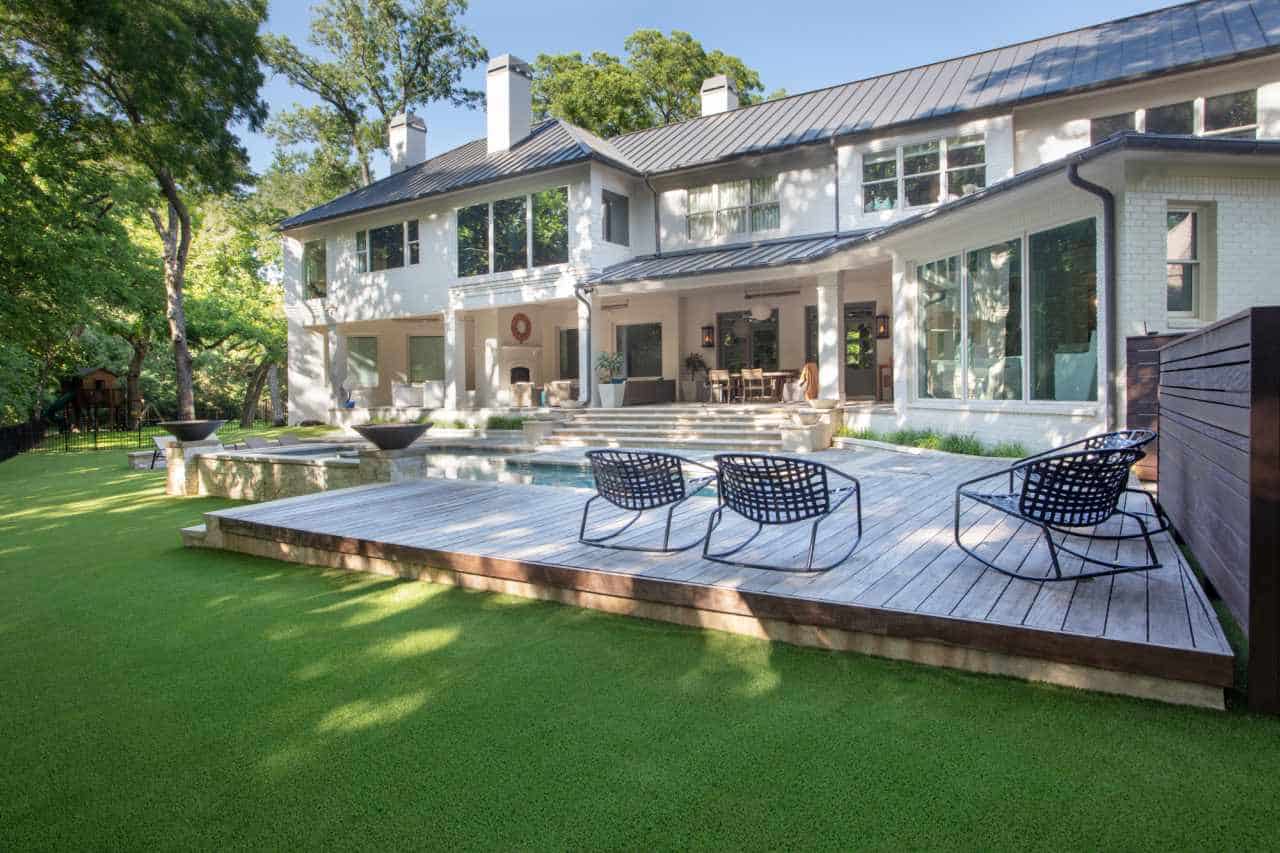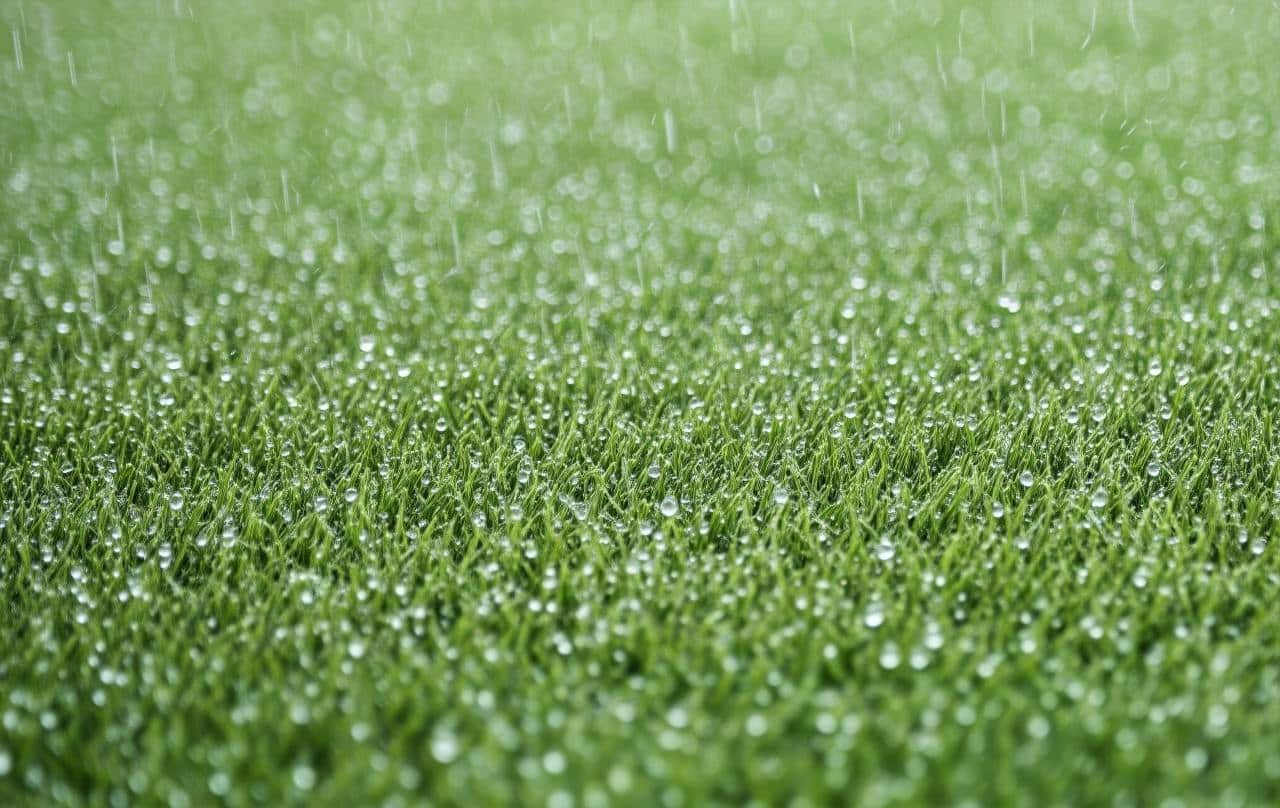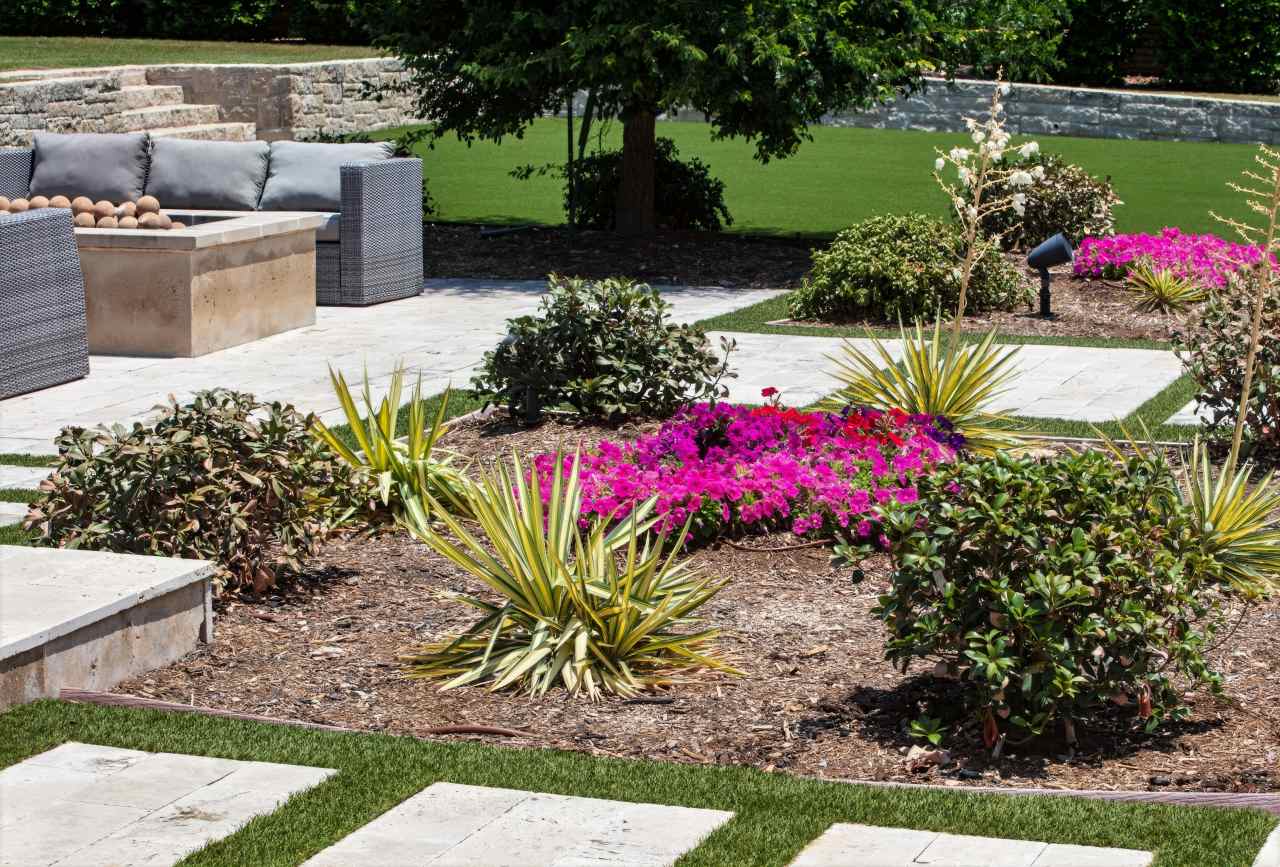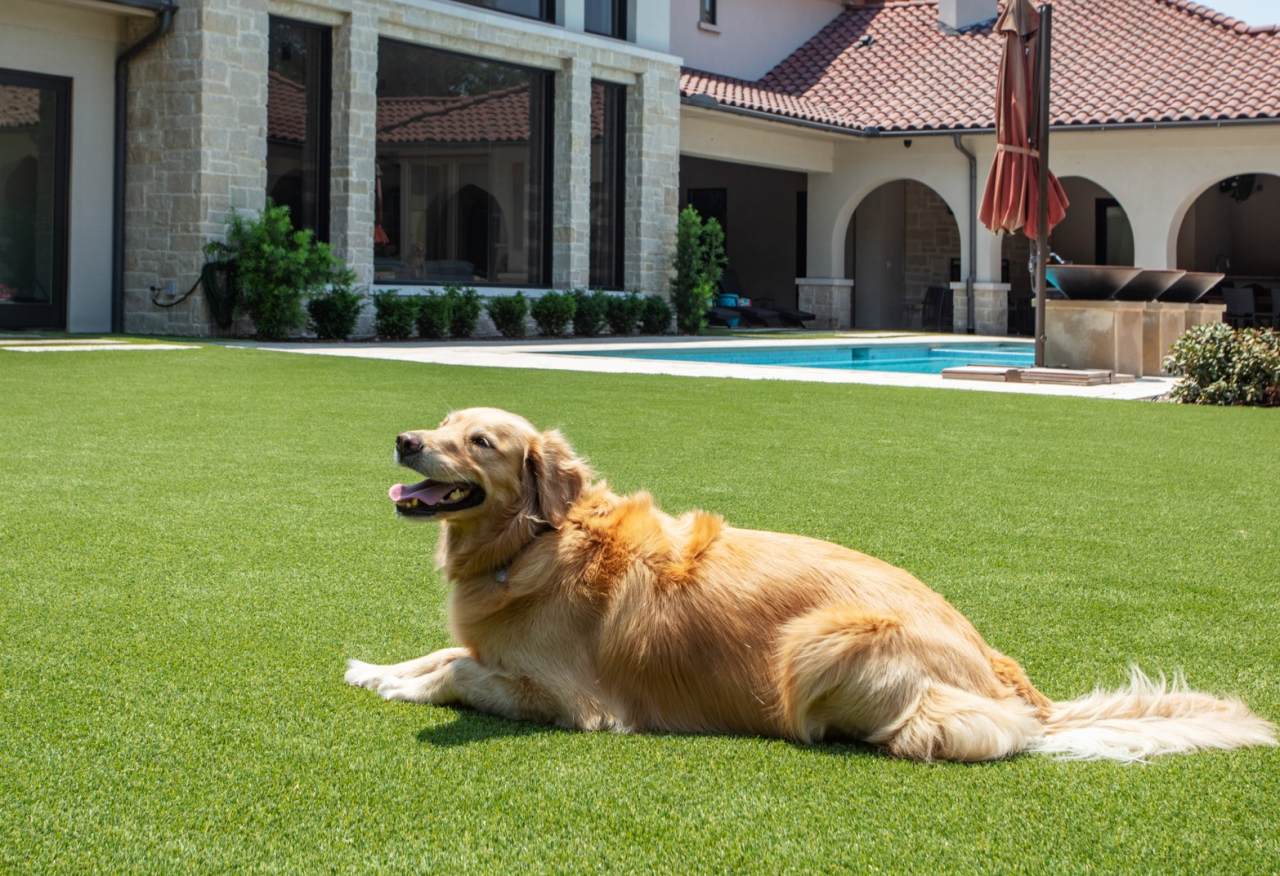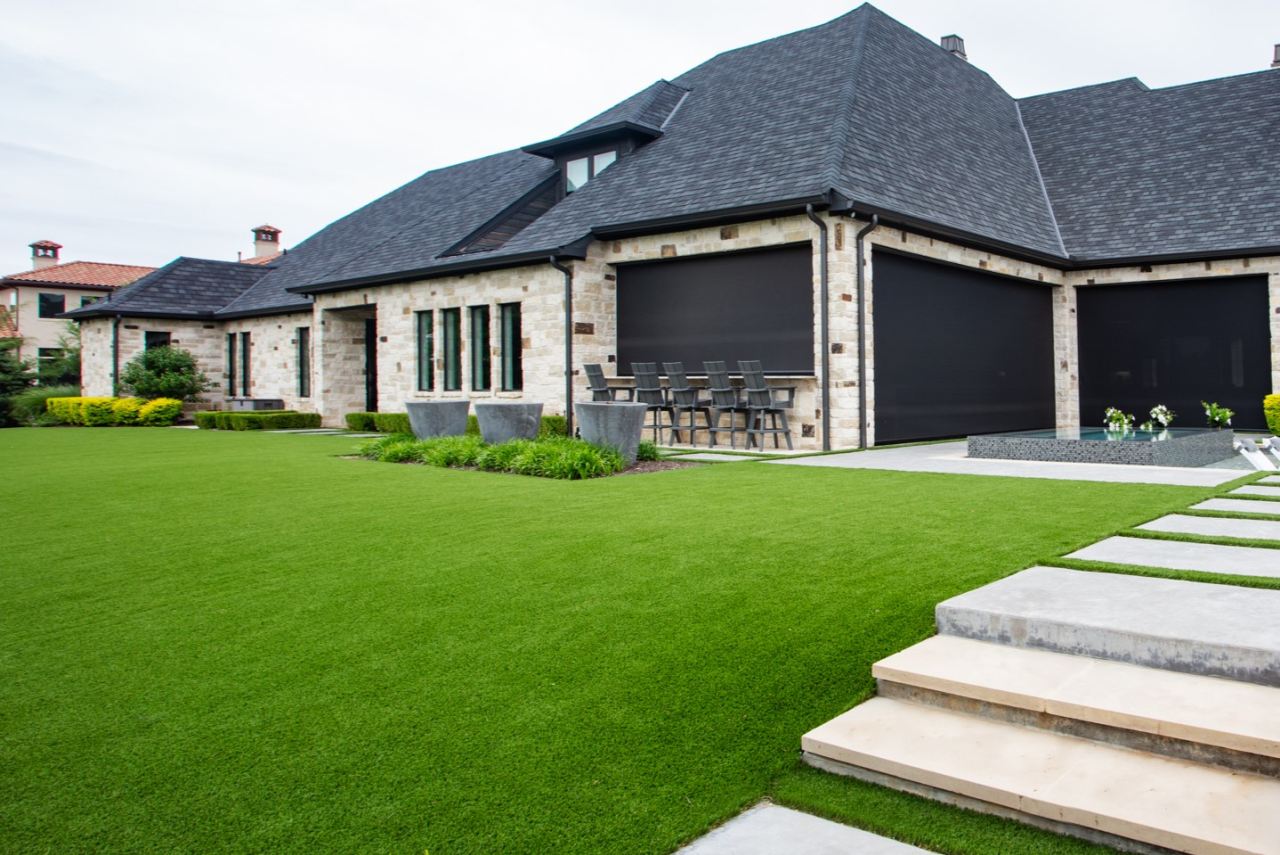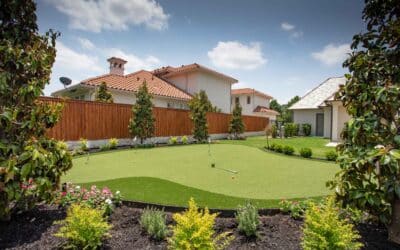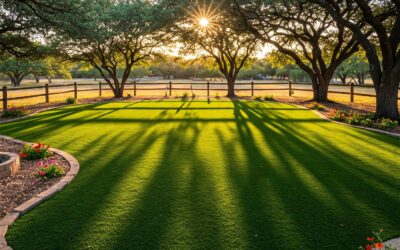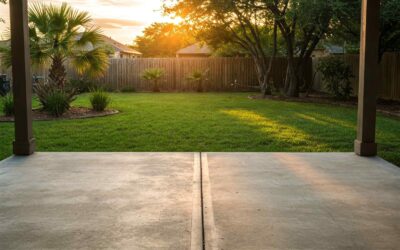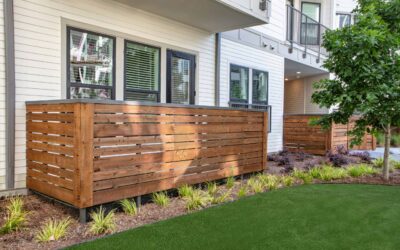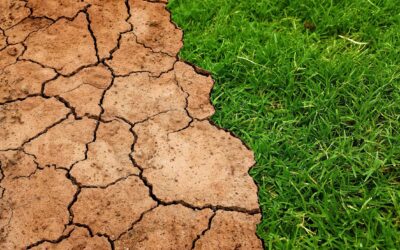With increasing numbers of homeowners and businesses across the south opting for artificial grass over real grass, the question of whether artificial turf is toxic or bad for the environment often comes up.
Understandably, homeowners want to know that their children, pets, and loved ones are safe out in the yard.
After being in the industry for well over a decade, we’ve seen both legitimate and overblown concerns about the toxicity of artificial grass. Most of the historical concerns have been addressed by the turf industry in the U.S., with premium artificial turf in 2025 generally safe and non-toxic.
The problem is a complex one, though, with many myths and opinions, as well as considerable misinformation and bias. Let’s delve a little deeper to help you make an informed decision…
Is Artificial Turf Toxic?
High-quality artificial turf contains no heavy metals, “forever chemicals” (PFAS) or phthalates, which are three of the main “bad boys” associated with turf toxicity. However, cheaper imported artificial turf may contain these substances, making the product toxic.
Because artificial grass is made of plastic, it automatically leads to claims of toxicity. However, only some plastics contain high-concern chemical additives.
The artificial turf industry has addressed much of the negative publicity from toxicity claims with technological advances, improving the manufacturing processes for turf and the content of the infill used.
SAVE TIME, MONEY & WATER WITH ARTIFICIAL GRASS
The experienced team at Artificial Grass Pros will provide a free estimate and help you make the switch. Contact us here.
How is Artificial Turf Made?
With artificial turf landscaping so widespread across the south, from backyards to city parks, playgrounds, and sports fields, there is increasing attention on how it’s made and whether it is toxic.
Traditionally, these concerns were valid, based on the old-style makeup of artificial grass and the manufacturing process. Legitimate safety concerns were aired over old-style products from the 1970s onwards.
These concerns have lingered despite manufacturing processes modernizing and adapting, with a concerted move away from the use of toxic substances in the artificial grass itself.
Nowadays, artificial turf not only closely resembles real grass. It’s also better for the environment in several ways, such as with water usage and the lack of fossil fuels (no lawn mowing) and chemicals used in ongoing maintenance (fertilizers, pesticides, herbicides, etc.)
Technological Advances in Artificial Turf Manufacturing
Modern artificial turf is made differently compared to the past, with more stringent manufacturing controls in place. More thought has also gone into the use of safe infills in turf installations in both domestic and commercial settings.
One of the main claims of toxicity with artificial grass is that it contains so-called “forever chemicals” or PFAS (per- and polyfluoroalkyl substances), which break down only very slowly over many years. These chemicals have been used since the 1940s in household products because of their fire resistance and ability to repel dirt and water.
Even today, they are widely used in shampoos, cleaning products, non-stick cooking equipment, waterproof clothing, paint, and pesticides without the same fears expressed:
In the past, PFAS were used widely as lubricants for the extrusion machines for plastic yarn when manufacturing artificial grass. Some of these toxic chemicals would naturally transfer to artificial grass during the production process.
However, PFAS have largely been removed from artificial grass production. Artificial Grass Pros only uses products that have actively been tested for PFAS and other harmful chemicals.
Shaw Industries, one of the largest sports turf manufacturers in the U.S., recently released a statement that said:
“PFAS chemicals are one of many substances that we require our supply partners to disclose the presence of in raw materials, components, and finished goods purchased by Shaw. Based on information provided to date by suppliers, Shaw Sports Turf does not use PFAS chemicals… to manufacture the components of its sports turf field products.”
Likewise, Artificial Grass Pros installations contain no forever chemicals. All major turf manufacturers that Artificial Grass Pros uses have switched to other, safe lubricants for extrusion machines—though this is seldom recognized in reporting on the matter in the press.
Modern turf contains no lead, other heavy metals or phthalates. Professional installations in backyards and elsewhere also avoid toxic infills, such as crumb rubber—which is made from recycled tires and may contain polycyclic aromatic hydrocarbons (PAHs), Volatile Organic Compounds (VOCs), and heavy metals.
A 2019 Yale study found over 300 chemicals in crumb rubber samples, with 50 classified as potentially carcinogenic or toxic.
The avoidance of crumb rubber infills should reduce safety and environmental concerns over the use of artificial grass but old opinions seemingly die hard.
What is Modern Artificial Turf Made of?
The best modern artificial turf installed nowadays is made predominantly from polyethylene (PE), polypropylene (PP) or nylon fibers. These are machine-stitched into a backing material in large production facilities using giant tufting machines. A second backing layer of adhesive holds the turf fibers in place, providing extra strength.
What is Infill Made of?
Rather than crumb rubber, infill materials used in most backyard installations could be:
Additionally, many non-toxic, pet-safe infill options reduce odor and bacteria buildup.
Crumb rubber is rarely used in residential installations but may still be found on some sports fields for its extra shock absorption. Artificial Grass Pros installations never use crumb rubber infill, so you can be sure that your yard or business is toxin-free with our artificial turf.
In summary, then, modern U.S. manufacturing standards mean that the materials used in the majority of high-quality artificial turf installations in the U.S. are considered safe, stable, and non-toxic under normal conditions.
Why are People Still Concerned About Artificial Turf?
If modern artificial grass is safe and non-toxic, why are people still concerned about it? Even the most casual Google search about the toxicity of artificial turf returns mainly negative opinions.
Many of these opinion pieces cite health scares ranging from cancer to breathing difficulties as a result of exposure to artificial grass. Often, they relate to older installations or installations using cheaper, imported artificial grass products that are not made to exacting U.S. manufacturing standards.
The best artificial grass, properly installed, should last 15-20 years. This longevity helps to pay back the higher initial cost of artificial grass compared to real grass because every year, money is saved on maintenance.
Other Concerns With Artificial Grass
Most of the other concerns with artificial grass are being addressed by technological advancements. For instance, the fear of turf ending up in a landfill is a legitimate one that is being addressed by the development of better recycling methods.
Some turf is even made from recyclable materials, such as olefin fibers, as well as recycled plastics or fibers that need no separating before recycling.
Overheating is another common issue with artificial grass. Turf does get hotter than real grass but cooling technology implemented during the manufacturing process keeps things manageable even on the hottest days in the south.
Some people are also concerned about an increased risk of flooding but professionally installed, high-quality artificial turf makes allowances for severe storms. Turf installed by Artificial Grass Pros can handle 28-30+ inches of rain per hour per square yard, which is more than adequate for most areas of the country.
Some people will always prefer the look and feel of natural grass to artificial grass. But homeowners looking for a landscaping solution that needs next-to-no maintenance find the benefits of modern, high-quality turf far outweigh its drawbacks.
What are the Environmental Benefits of Artificial Turf?
The use of artificial grass vs real grass involves trade-offs on both sides. Artificial grass manufacturing has a larger carbon footprint than real grass sod—and it’s currently much harder to dispose of in an ecologically friendly way at the end of its life.
Poor-quality artificial grass may also pose dangers with soil and water contamination (leaching of chemicals into the soil and water) and microplastics pollution.
However, there are significant ongoing environmental advantages to high-quality artificial grass once it’s installed, due to its low-maintenance requirements compared with natural grass.
For instance:
So, is Artificial Turf Safe for Kids and Pets?
In the past decade, the Artificial Grass Pros team has installed turf in thousands of yards across the south, many of which have children or pets enjoying the spaces.
From backyard playgrounds to dog runs and backyard lawns, artificial grass is versatile and suits many spaces that kids and pets use. It is considered safe, effective, and hygienic (yes, dogs can pee on artificial grass) if installed professionally.
Commercial playgrounds use artificial grass with a layer of shock-absorbent padding beneath to increase safety. Dog parks also use artificial turf.
With the hot southern sun, kids and pets may want to avoid using the lawn in the middle of the day but that would apply to real grass lawns in the middle of summer too.
If artificial turf weren’t considered safe for kids and pets, commercial areas designed for them would not be permitted to use it.
FAQs
Artificial Grass Pros: Commitment to Safety
Parents and families should exercise due care and attention when choosing materials for backyard lawns, play spaces, dog runs, etc. After all, it’s the family’s health at stake.
However, it is important to separate outdated fears from modern realities with artificial grass.
All Artificial Grass Pros products are PFA-safe per EPA-1633, non-toxic, and lead-free. We install only the finest artificial grass made from approved materials. The infill we use is safe and toxin-free. The same cannot be said of cheaper imports.
For backyard spaces that look like the real thing but with a fraction of the maintenance required, discuss your options with one of our artificial grass professionals.

